If you’ve ever paused to ask what language is spoken in the Philippines, you’re not alone. This remarkable Southeast Asian archipelago of over 7,000 islands is far more than a picturesque travel destination—it’s a living mosaic of cultures, traditions, and voices. Whether you’re an adventurer eager to explore pristine beaches, a business professional relocating for career opportunities, or simply a language enthusiast fascinated by conversations across cultures, understanding Philippine languages is your gateway to unforgettable human connections.
The Philippines stands apart as one of the most linguistically and culturally diverse countries on Earth. Its unique history—shaped by indigenous dynasties, waves of migration, centuries of Spanish rule, and later, American influence—has resulted in over a hundred living languages, each reflecting the soul of its region. This means that every journey, from cosmopolitan Manila to remote mountain villages, can expose you to a new vernacular, perspective, or cultural insight. Language is not just a means of communication here; it is a key to hospitality, humor, local wisdom, and shared identity.
For newcomers, this complexity can be both enchanting and overwhelming. On city sidewalks and in bustling markets, you’ll hear Filipino and snippets of English intermingling with dozens of regional languages—each with its own sound, slang, and meaning. Whether you want to make friends, understand local traditions, or simply order the best bowl of adobo, knowing how language works in the Philippines will transform your experience from ordinary to extraordinary.
This comprehensive guide will help you unravel the linguistic landscape of the Philippines, empowering you with knowledge and practical advice—so you can travel, work, and build friendships while truly appreciating the country’s rich multilingual heritage.
The Official Languages of the Philippines
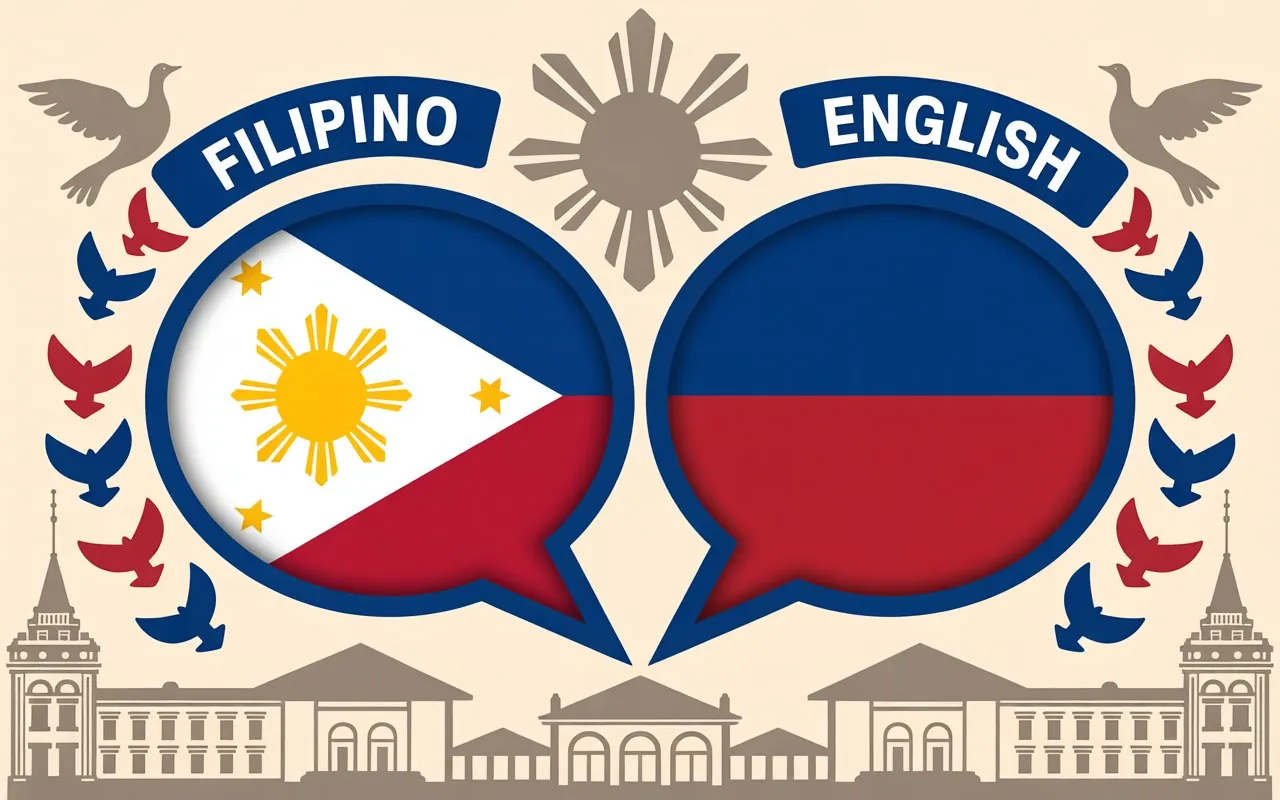
When people ask what language is spoken in the Philippines, the conversation often starts with the official languages — Filipino and English. Both play an essential role in government, education, media, and everyday life.
Filipino: The National Language and Its Origins
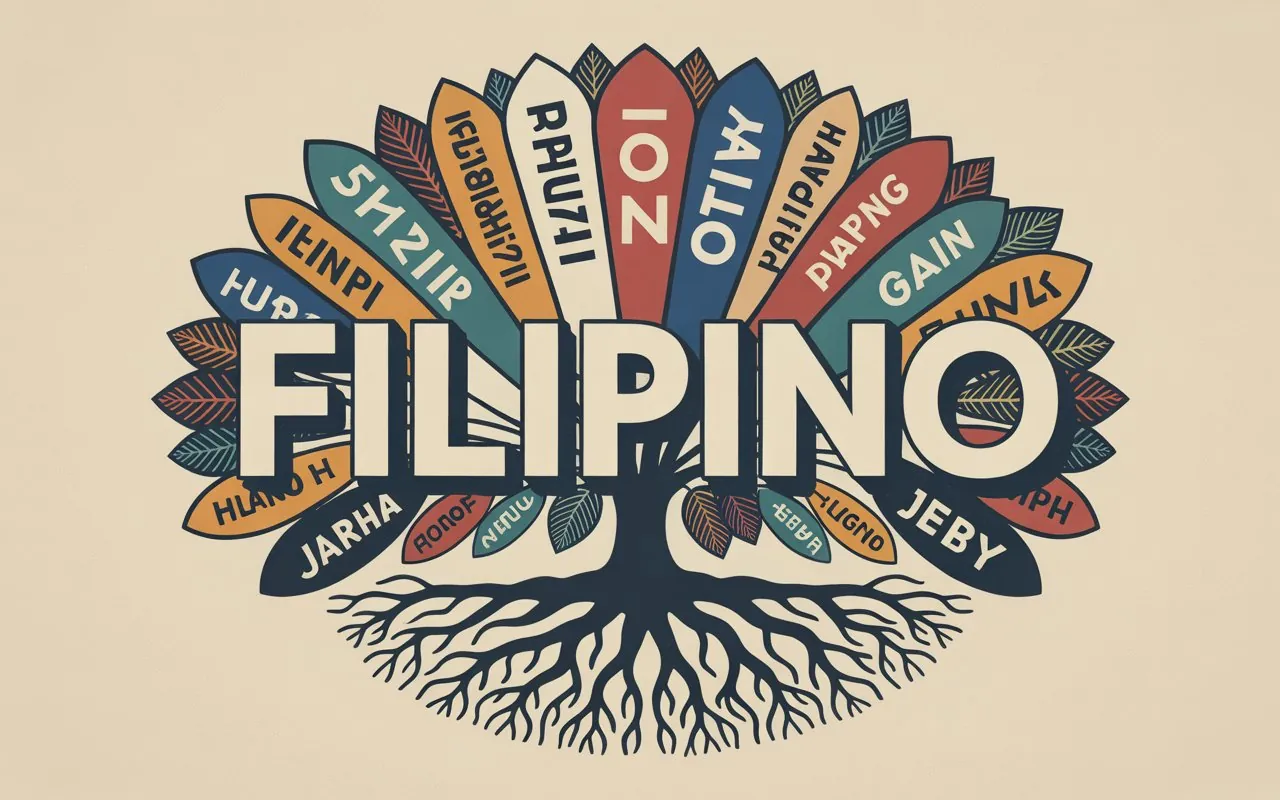
Filipino is recognized as the national language of the Philippines and one of its two official languages. It is a standardized and officially regulated language based on Tagalog. However, unlike Tagalog, Filipino is a dynamic, evolving language designed to incorporate vocabulary and expressions from other Philippine languages, as well as borrowings from foreign languages like Spanish, English, and even Chinese.
To understand Filipino, it’s helpful to look at its formation and cultural significance:
- Origins and Development: Filipino evolved out of Tagalog, a native language spoken predominantly in Metro Manila, southern Luzon, and some neighboring provinces. In 1937, Tagalog was chosen as the template for the national language, later rebranded as Filipino in 1987 to emphasize inclusivity to other regional languages.
- Role as Lingua Franca: Filipino serves as the lingua franca among the diverse peoples of the Philippines. Despite regional differences in language, most Filipinos understand or speak Filipino as a second language.
- Cultural Importance: Filipino is used extensively in music, films, literature, political discourse, and media. It is woven into the fabric of Filipino identity and national pride.
- Daily Use: Whether you’re walking through a busy Filipino wet market or catching a public jeepney ride, you’ll hear Filipino spoken all around.
Extended Context:
Filipino continues to evolve as it absorbs slang and newly coined terms influenced by social changes and globalization. For example, Filipino texting slang like “LOL” and “JK” often coexist with native words and bilingual expressions. This dynamic nature reflects a living language that changes with society.
English: The Language of Business, Education, and Global Connectivity

English holds an extraordinary place in the Philippines. Despite native Filipino languages dominating everyday conversation, English is an official language used extensively in official functions, business environments, education systems, media, and law.
- Education: English is the medium of instruction especially in math, science, and technical fields from an early age. Most Filipino university textbooks and academic papers are written in English.
- Business and Government: English is the language of choice for business contracts, government documents, legal proceedings, and international diplomacy. Many multinational and local companies conduct their operations in English.
- Media and Entertainment: Most newspapers, magazines, TV programs, and online content are widely available in English. Filipino media personalities and entertainers often speak in English or code-switch between English and Filipino.
- Tourism and Hospitality: For foreign tourists, English is a huge advantage, as many Filipinos are fluent and happy to assist you in English, particularly in urban areas and tourist hotspots.
Extended Context:
It’s not uncommon to hear a “Taglish” blend — a mix of Tagalog and English — in casual Filipino speech, where sentences smoothly transition between both languages. This code-switching is not only common but a natural part of Filipino expression, demonstrating the deep integration of English into daily life.
Major Regional Languages in the Philippines
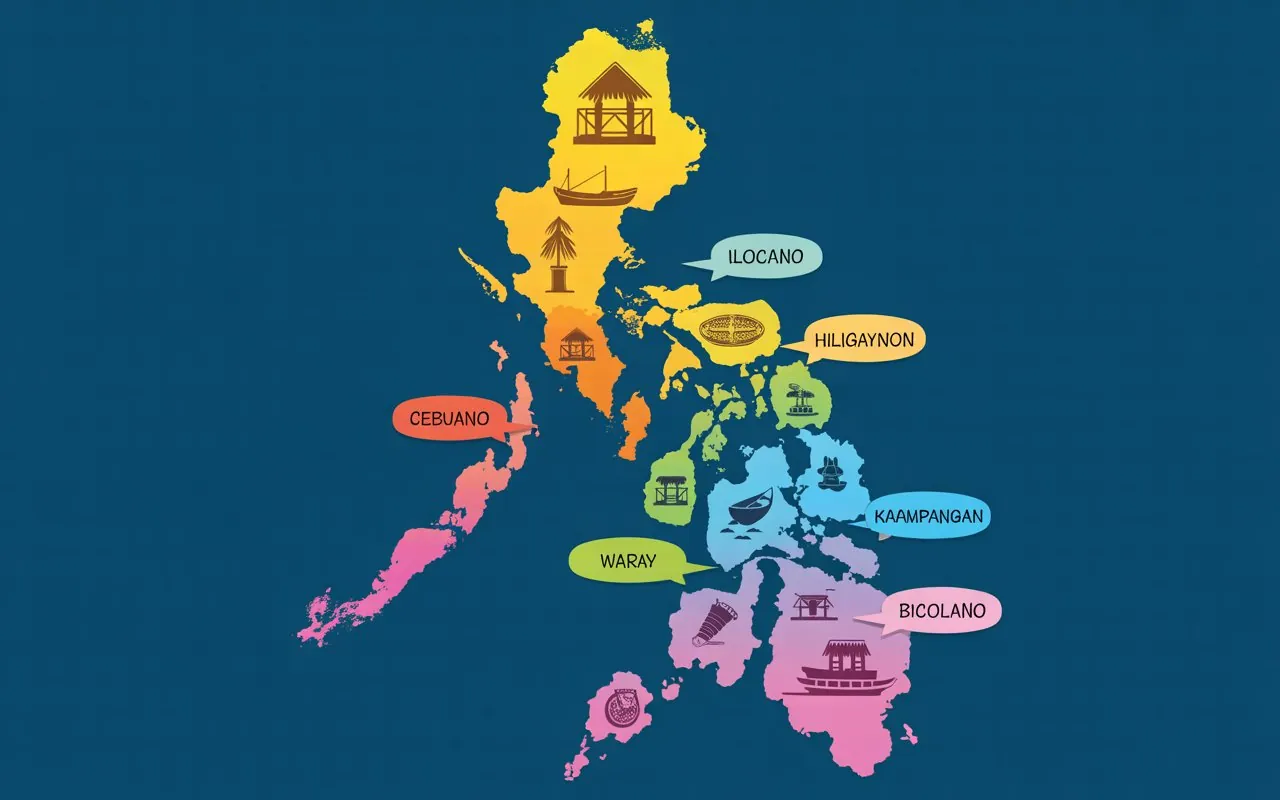
The Philippines is not a monolingual nation. Beyond Filipino and English, the archipelago is home to dozens of indigenous languages and dialects, each with its own identity, history, and cultural significance. Understanding this linguistic patchwork is important to answer fully what language is spoken in the Philippines.
Tagalog and Its Special Relationship to Filipino
While Filipino is rooted in Tagalog, the two are not quite identical. Tagalog is a native language spoken by around 24 million people as a first language, primarily in Metro Manila, Southern Luzon (provinces such as Batangas, Laguna, Bulacan, and Quezon), and some neighboring areas.
- Differences Between Tagalog and Filipino: Tagalog is a natural language with deep historical roots. Filipino, on the other hand, is a standardized, modernized form meant to serve all Filipinos. Filipino includes borrowed words not just from Tagalog but from other Philippine languages and global languages too.
- Cultural Significance: Tagalog literature, poetry, and theater are pillars of Philippine art. Many classic Filipino folk songs and movies originated in Tagalog.
Extended Understanding:
If you meet someone who speaks Tagalog natively and inquires if you speak Filipino, they’re essentially referring to the same communication bridge—but Filipino aims to be more inclusive and standardized for national use.
The Top Regional Languages — A Closer Look
The Philippines’ linguistic diversity is truly vast. Some regional languages have tens of millions of native speakers, with vibrant literary traditions and media presence. Here are the major ones beyond Tagalog/Filipino:
1. Cebuano (Bisaya)
- Spoken by over 21 million people, Cebuano is the second most spoken language.
- It is native to Cebu, Bohol, Negros Oriental, and parts of Mindanao.
- Cebuano has its own rich body of literature, radio stations, and television channels.
- Many Filipinos use “Bisaya” to refer to Cebuano, but technically Bisaya means Visayan languages collectively.
Key Phrase Examples in Cebuano:
- Hello: Kumusta
- Thank you: Salamat kaayo
- How are you?: Kumusta ka?
2. Ilocano (Iloko)
- Around 9 million native speakers in northern Luzon provinces like Ilocos Norte and Ilocos Sur, La Union, and also in parts of Mindoro and Mindanao.
- Ilocano has an ancient literary heritage dating back to the early Spanish colonial period.
- Many Ilocanos have migrated nationwide, spreading the language further.
Ilocano Is Important Because:
- It is one of the largest regional languages.
- It’s used in local government and education in Ilocos region.
- It has a growing presence in digital media, with blogs and online news portals.
3. Hiligaynon (Ilonggo)
- Spoken by approximately 7 million in Western Visayas, especially Iloilo and Negros Occidental provinces.
- Known for its melodic and soft phonetics.
- Used extensively in local radio, television, and theaters.
Fun Fact:
Many Filipinos find Hiligaynon one of the sweetest-sounding languages.
4. Waray
- Approximately 3 million speakers primarily in Eastern Visayas, particularly Samar and Leyte islands.
- Waray has its own distinct vocabulary and expressions, often misunderstood outside its region.
- It is used in local news and radio broadcasts.
5. Kapampangan
- Native to Pampanga and some parts of Central Luzon.
- Considered a language with vibrant oral traditions and cultural festivals like the Giant Lantern Festival (Ligligan Parul).
- Despite the proximity to Tagalog areas, Kapampangan remains strongly distinct.
6. Others: Bicolano, Pangasinan, Tausug, Maguindanaoan, Maranao
- These languages reflect the cultures in southern Luzon and Muslim Mindanao.
- Tausug, Maguindanaoan, and Maranao are important languages of the Muslim communities in Mindanao.
- Bicolano has many sub-dialects and is spoken in the Bicol region.
Extended Insight:
Knowing these regional languages can be more than an academic exercise — it’s a door to communities, local festivals, folk stories, and traditions that national languages cannot capture fully.
How Many Languages Are Spoken in the Philippines?
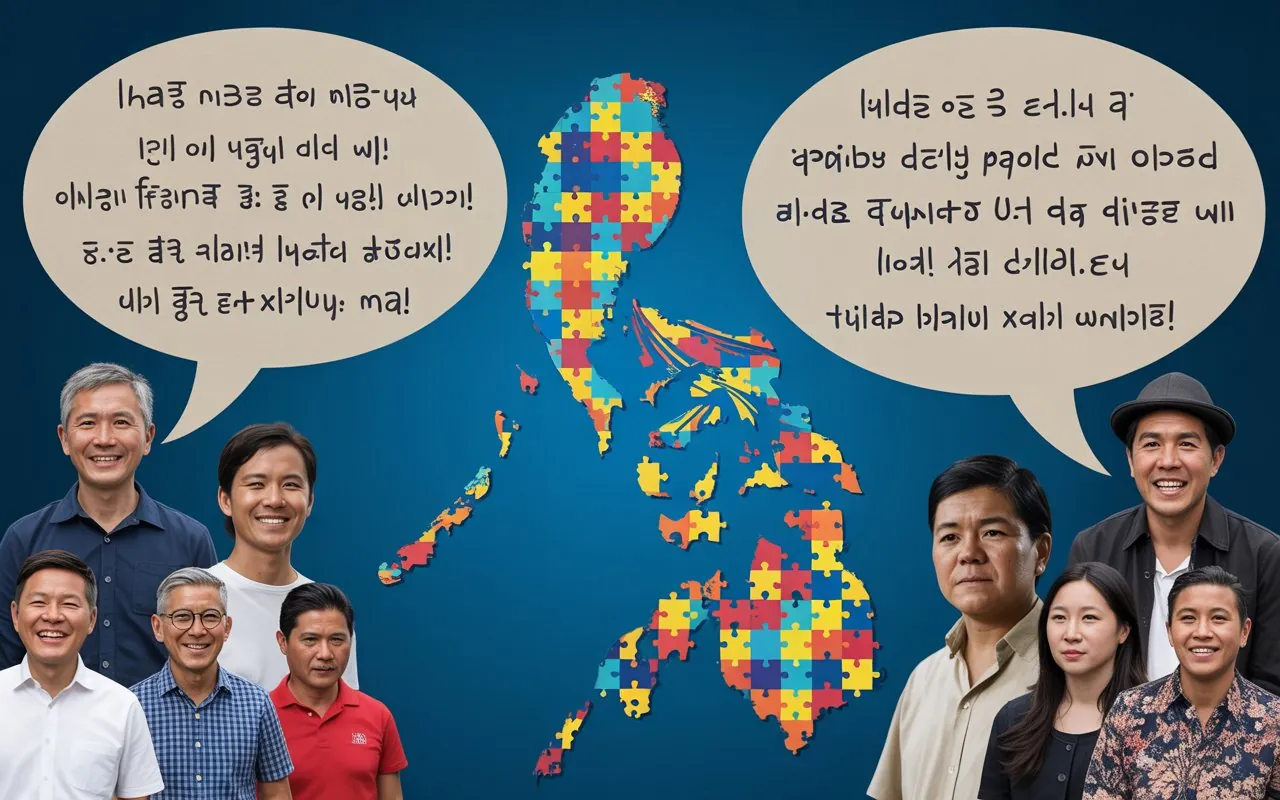
Beyond the dominant regional languages, the Philippines has one of the highest concentrations of languages worldwide. Official counting varies due to classification debates, but linguists generally recognize between 120 to 187 living languages.
- These belong primarily to the Austronesian language family, sharing roots with Malay, Hawaiian, Maori, and Malagasy.
- Many languages have multiple dialects and sub-variants.
- Some languages are critically endangered or have only a handful of elderly speakers left.
Why Does This Count Matter?
Understanding how many languages are spoken in the Philippines highlights the importance of cultural preservation and the risk of language loss due to urbanization and globalization.
- Endangered Languages: Some indigenous languages like Inagta, Agta, and Alangan are spoken by indigenous peoples in remote mountainous areas and face extinction.
- Revitalization Efforts: The Philippine government and NGOs support programs to preserve and promote minority languages through bilingual education and cultural documentation.
Language and Identity
In many Philippine communities, language is tightly linked with ethnic identity and tradition. For example:
- The Ifugao, famous for the Banaue Rice Terraces, speak Ifugao languages.
- The T’boli, known for vibrant woven textiles, have their own language.
Learning about these small languages opens up an anthropological lens into the archipelago’s deep-rooted diversity.
Understanding Dialects vs. Languages in the Philippines
A common source of confusion when learning about Philippine languages is the difference between “dialects” and “languages.” This confusion sometimes leads to the inaccurate claim that the Philippines has “over 100 dialects” rather than recognizing these as distinct languages.
- Linguistically, a ‘language’ refers to a system of communication with distinct grammar, vocabulary, and often mutual unintelligibility with other languages.
- A ‘dialect’ is a regional or social variety of a language with variations but usually mutual intelligibility with other dialects of that language.
Examples in the Philippines:
- Tagalog vs. Filipino: Tagalog is a native language, while Filipino is the standardized national language derived predominantly from Tagalog.
- Cebuano vs. Hiligaynon: These two are mutually unintelligible and are considered separate languages, though often people might call them “dialects” out of habit.
- Dialects within Languages: For example, within Cebuano itself, people speak slightly different varieties depending on whether they’re from Cebu City, Davao, or Mindoro.
The Sociopolitical Aspect:
The Philippine government officially uses “language” for the major groups and recognizes many minority languages, but some people colloquially call them dialects, contributing to confusion.
Practical Tips: Communicating in the Philippines

Communicating effectively in the Philippines requires more than simply knowing the official languages. Successful communication is about cultural sensitivity, awareness of regional language preferences, and a sprinkle of Filipino warmth.
Useful Filipino Phrases for Travelers
Learning some basic Filipino phrases will make your trips smoother and your interactions warmer.
| English | Filipino | Pronunciation Guide |
|---|---|---|
| Hello | Kumusta | koo-moos-tah |
| Thank you | Salamat | sah-lah-mat |
| Yes | Oo | oh-oh |
| No | Hindi | hin-dee |
| How much? | Magkano? | mag-kah-no |
| Where is…? | Nasaan ang…? | nah-sah-ahn ang |
| Good morning | Magandang umaga | mah-gan-dang oo-mah-gah |
| Excuse me / Sorry | Paumanhin | pow-mahn-heen |
Why Learn These?
Even a little effort in Filipino shows respect and goodwill, which Filipinos greatly appreciate. Plus, in rural areas or among older generations, Filipino (or Tagalog) might be the only language the person knows well.
When to Use English
English can be your go-to language in many settings, especially in urban areas, government offices, shops, hotels, hospitals, and universities.
- Filipinos generally have excellent English proficiency.
- In professional environments, English is preferred.
- Most signage, official forms, and menus are available in English.
Learning Regional Expressions
Showing awareness and respect for regional languages can greatly enhance your travel experience. For example:
- In Cebu or Mindanao: learn a few Cebuano phrases.
- In Ilocos: practice Ilocano greetings.
- In Davao or Cotabato: understanding Tausug or Maguindanaoan greetings can open doors.
Example: Instead of “Thank you” (Salamat), in Cebuano you might say “Salamat kaayo” (“Thank you very much”).
Communication Etiquette
- Filipinos value politeness, so always pair your requests with “po” and “opo” (formal ‘please’ and ‘yes’) when speaking Filipino.
- Smile and maintain friendly body language.
- When unsure, start conversations in English, and they’ll typically adjust based on their preference.
Using Language Apps and Phrasebooks
- Apps like “Learn Filipino” or “Cebuano Dictionary” can be downloaded before traveling.
- Phrasebooks focused on regional languages will add an extra layer of cultural insight.
- Try listening to Filipino music or watching Filipino movies with subtitles to get familiar with pronunciation and expressions.
Sign Language and Other Minority Languages
Beyond spoken tongues, the Philippines has embraced Filipino Sign Language (FSL) as the official language of the Deaf community. FSL differs significantly from American Sign Language (ASL) and other international sign systems.
Filipino Sign Language (FSL)
- Officially recognized in 2018 as the national sign language.
- Used in schools for the deaf and in government communication.
- Has its own grammar and syntax distinct from spoken Filipino or English.
Other Minority Languages and Creoles
- Chavacano: A Spanish-based creole spoken in parts of Zamboanga and some Mindanao communities. Chavacano combines Spanish vocabulary with Filipino grammar, making it unique and historically significant.
- Indigenous Languages: Numerous indigenous peoples speak their own languages, often unwritten or with oral traditions, such as Ifugao, Kalinga, and Mangyan languages.
- Pidgins and Mixed Languages: In some areas, mixtures of Tagalog, English, Spanish, and indigenous words form local pidgins.
Language Influence: Spanish, Chinese, and Beyond
The linguistic landscape of the Philippines reflects centuries of cultural contact and colonization.
Spanish Influence
- The Philippines was a Spanish colony for over 300 years (1565–1898).
- Many Filipino words—especially in religion, family, commands, numbers, and foods—are derived from Spanish.
- Family names (surnames) and many place names are Spanish in origin.
- However, Spanish is now mostly extinct as a spoken language among the general population, surviving mainly in Chavacano and academia.
Examples of Spanish loanwords:
| Spanish | Filipino Equivalent | Meaning |
|---|---|---|
| Mesa | Mesa | Table |
| Silya | Silya | Chair |
| Iglesia | Simbahan | Church |
| Calle | Kalye | Street |
| Cuatro | Apat | Four (used occasionally in numbers) |
Chinese Influence
- Many terms related to food, commerce, and kinship have Chinese roots, particularly from Hokkien and Cantonese.
- The Philippines has a large ethnic Chinese minority influencing commerce and some linguistic areas.
Example Chinese loanwords: pancit (noodles), lumpia (spring rolls), siopao (steamed buns).
Modern English and Globalization
- The pervasive use of English in schooling and media continues to influence vocabulary.
- English technological terms are absorbed into casual Filipino speech, especially among youth and professionals.
Frequently Asked Questions
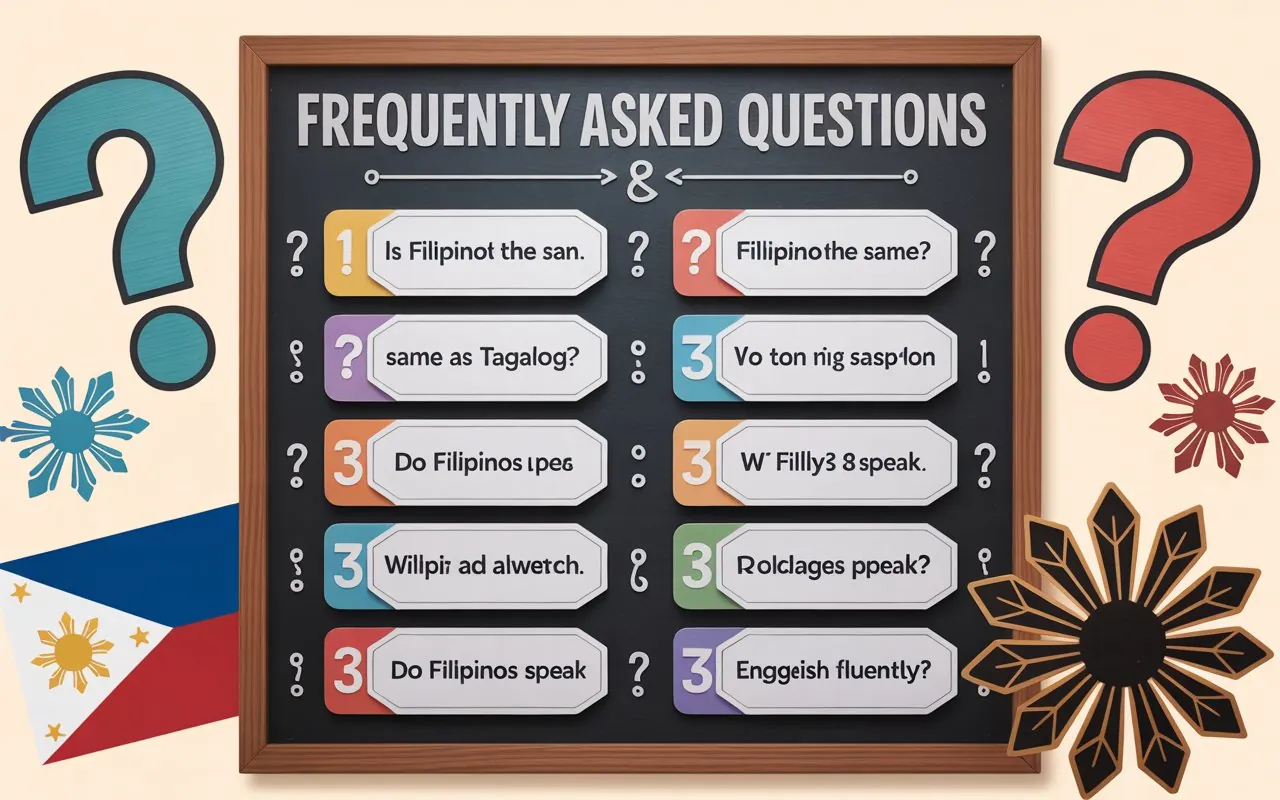
Is Filipino the same as Tagalog?
They are closely linked but not identical. Filipino is the standardized national language based primarily on Tagalog but designed to include elements from other languages to represent the country’s diversity.
Do most Filipinos speak English fluently?
English proficiency in the Philippines is high compared to many other Asian countries. Most urban Filipinos, especially the younger generation, speak English well. However, fluency may vary in rural areas.
Should I learn a Philippine language before visiting?
While not mandatory, learning basic Filipino or the local language of the region you will visit is highly beneficial. It will make interactions smoother and foster goodwill.
Is it possible to communicate everywhere in English?
In major cities and tourist hubs, yes. In remote or rural areas, knowledge of Filipino or a local dialect may be necessary.
How different are regional languages from Filipino?
Most regional languages are completely different from Filipino and mutually unintelligible. For example, a Cebuano speaker will generally not understand a Tagalog-only speaker without Filipino as a bridge language.
Conclusion
So, what language is spoken in the Philippines? The answer is beautifully complex. While Filipino and English are the official languages that unite the nation, dozens of regional languages thrive alongside these shared tongues, each a guardian of history, culture, and identity. Filipino is your gateway language—universally understood and culturally significant—while English opens many doors in education, business, and global communication. Yet, every island and region proudly preserves its linguistic heritage, continuing traditions through language, songs, proverbs, and stories.